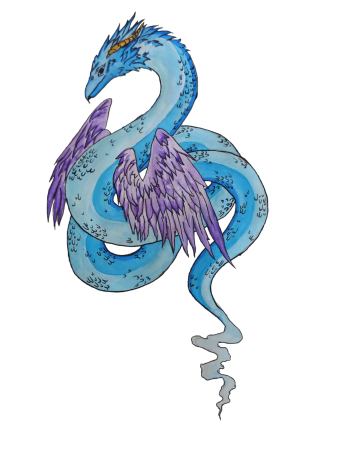Why Blues? The history of an unconventional mascot
“Whose House?” “Blues House!” The cheer shouted at every Urban sporting event. Every student at Urban knows how to respond when a teacher, coach, or fellow student yells “Whose House?” Yet in my time at Urban, I haven’t met a single person who is able to answer the question: Why the Blues? Where did our unconventional mascot come from?
I interviewed members of the Urban community in search of an answer. Richard Lautze, an Urban math teacher, said, “when I arrived at Urban in 1981, there was no mascot. There were no sports teams, really. There were sports activities, but no sports teams that played against other schools.”
Not having a mascot became ingrained in the school’s culture. However, that changed in the mid ’90s when Urban began taking athletics more seriously, resulting in the proposal of a school mascot by a group of students.
“It was a heated topic because a large percentage of the school did not want a mascot,”  said. Indeed the subject seemed to split the school at the time. Not having a mascot had become a unique part of Urban culture, and a source of pride for many students. It was something that set Urban apart from other schools, therefore, many students and faculty were passionate about not having a mascot.
said. Indeed the subject seemed to split the school at the time. Not having a mascot had become a unique part of Urban culture, and a source of pride for many students. It was something that set Urban apart from other schools, therefore, many students and faculty were passionate about not having a mascot.
However, there was an equally passionate group of students and faculty pushing for the creation of a school mascot. They wanted something to cheer for during sports games and a figure to represent Urban. Alongside them was the athletic director at the time, Anthony Thomas, who wanted a more traditional mascot so the students could have something to root for. After a few years of tense debate, the change was put to a vote during the 1999 school year and a compromise was reached. The Urban Blues.
But what is an Urban Blue? It seems to be largely up to personal interpretation which was the original point. The compromise reached in the late nineties would provide a symbol for our school to cheer for, but not a traditional mascot. That way, the community was able to preserve the uniquely, non-conformist culture of Urban while promoting school spirit during athletic games. “We’re just going to be the Blues and we’re not going to define them,” Lautze said. Having such an open-ended idea of what Urban is, allows space for the Urban community to decide how to interpret being a Blue. The beauty of the Blue is that it’s something that can be ever changing and something the whole school can contribute to, rather than being confined by a tradition.
According to Lautze, the closest thing the school has had to a traditional mascot was shortly after the creation of the Blues. “There was a young woman who painted herself blue, and built a little cardboard house and ran around as the Blues House,” said Lautze. That was where the famous cheer of ‘whose house? blues house!’ originated.
The catalyst for the creation of the more material mascot was the athletic director at the time, Anthony Thomas. He wanted a more traditional mascot so the students could have something to root for. However, after that, there were no other attempts to create a physical manifestation of the Urban Blues, and the memory of the Blues House as a mascot seemingly faded away.
Even though the Urban Blues were created over twenty years ago, and most students at Urban today don’t know the history, many still feel connected to the spirit of the Blues. “I think our mascot being blue is a true display of Urban.” Said Oscar Cervarich 23’ “As a member of the Student Admissions Committee I’m often asked what a Blue means. [I think] it’s definitely abstract. I think it’s a fun example of Urban being Urban.”











